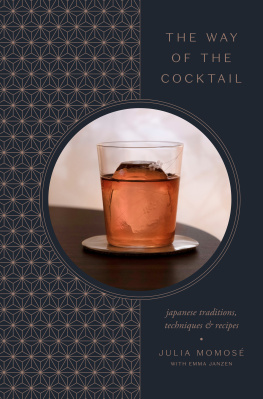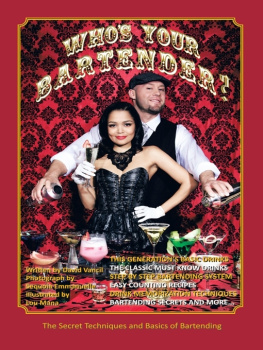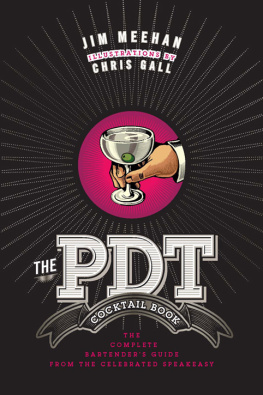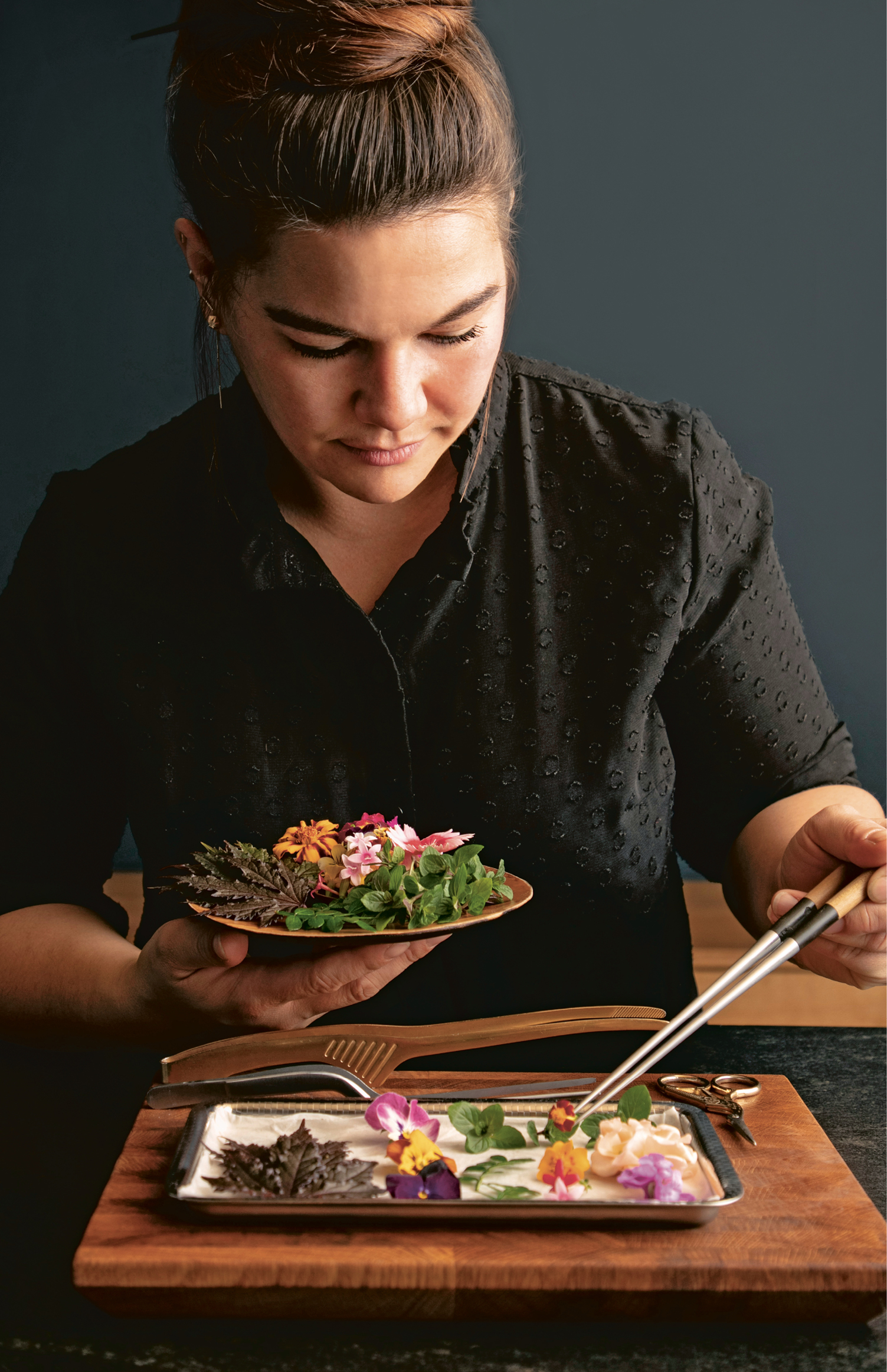Contents
Landmarks
Print Page List
ACKNOWLEDGMENTS
As with the best things in life, the path traversed to write this book was not walked alone. I am indebted to my co-writer, Emma Janzen, who brought her expertise as a spirits journalist, editor, and book author to bring clarity and life to my story.
This book would not have come into existence if it werent for Jennifer Sit, Executive Editor at Clarkson Potter, who saw the need for a book on Japanese culture and cocktails. I must extend my deepest thanks to Talia Baiocchi, Editor in Chief of PUNCH, who recommended me as the author for such a book and another expression of gratitude to Jennifer for her trust and guidance along the way.
Thank you, Kevin Miyazaki, for photographs that capture the essence words cannot express.
My thanks to the people who graciously shared their time, knowledge, and expertise, including Greg Boehm of Cocktail Kingdom, Master Sommelier Ken Frederickson of High Road Spirits, Eric Swanson of Tokiwa Imports, and brand ambassadors like Gardner Dunn of Suntory, Emiko Kaji and Naoki Tomoyoshi of Nikka, Yumi Yoshikawa of Chichibu Distillery, Jonathon Edwards of Vine Connections, Maxwell Leer of MTC Sake, and the countless others who have offered sips, stories, and peeks into the lives of some of the worlds greatest sak breweries and Japanese spirits and shch distillers.
Emma said writing a book is a family affair, and she was right. Her partner, Zach, my friend and bartender at Kumiko, Kayla, and my husband, Sammy, all lent their time and support. My deepest gratitude goes to my parents, Nancy and Chris Momos, who taught me to live as a multicultural woman, how to make people feel at home, and for sharing some family recipes.
JULIA
A million thanks to the two extraordinary women who brought me on board for this project. Julia, its been a distinct honor and pure joy to help bring your vision to fruition. Thank you for opening my eyes to such a beautiful world and for trusting me with your stories. Jennifer Sit at Clarkson Potter, thank you for believing I was a good fit for this project, and for your patient guidance through this process!
Thanks also to the teachers, guides, and counselors who spared their time, knowledge, advice, and connections to usEric Swanson, Maxwell Leer, Greg Boehm, Shingo Gokan, Matthew Rowley, Maggie Hoffman, Hanna Leeand to Kana Wahizu and Stephen Lyman for their kindness and expert tours of southern Japan.
Finally, thanks to my family for the time away, and to my Zach for being the best partner in crime a girl could ask forfrom our wild adventures on the ground in Japan to the smallest brainstorming sessions (ahem, interruptions to your daily routine), as usual I couldnt have done this without you by my side.
EMMA
Born and raised in Japan, JULIA MOMOS has infused the sensibilities of Japanese bartending culture into every cocktail program she has contributed to, from the Michelin-starred GreenRiver and its companion lounge, The Annex, to Oriole, a two-Michelin-starred tasting menu restaurant in Chicago. She then opened her own bar, the acclaimed Kumiko, an intimate Japanese drinking experience in Chicago, followed by the omakas counter Kikk, which earned a Michelin star. She lives in Chicago with her husband and fellow bartender, Sammy Faze, in a household of plants.
EMMA JANZEN , is a journalist, editor, and photographer specializing in all things drinks and design. In 2018, her first book, Mezcal: The History, Craft & Cocktails of the Worlds Ultimate Artisanal Spirit, was nominated for a James Beard Award. She lives in Chicago with her husband and two tuxedo cats.
jikasei no mono
HOUSEMADE INGREDIENTS
Syrups, Infusions, Teas, and More
CASHEW ORGEAT
Crack 5 green cardamom pods and toast in a pan over low heat until aromatic (make sure you agitate the pan so they dont burn). To make via sous vide: Pour 16 fluid ounces cashew milk (such as Elmhurst) in a sous vide bag with the toasted cardamom. Seal the bag and cook sous vide for 1 hour at 180F.
To make on the stovetop: Combine 16 fluid ounces cashew milk with the cardamom pods in a saucepan and gently warm the mixture. Keep covered on low (just under a simmer) for 30 minutes, and adjusting the heat as necessary to make sure it does not boil over or burn.
Strain the cardamom out of the milk. Weigh the milk and add 2 parts sugar to 1 part spiced cashew milk by weight. Finish with teaspoon of orange blossom water. Store in the refrigerator. Makes 32 portions
Use it:
Japanese Cocktail ()
Japanese Cocktail #2 ()
SHISO NO JYSU
Wash 12 ounces of red shiso leaves and set aside. In a large pot, bring 7 cups (60 fluid ounces) water to a rolling boil. Add the shiso and boil for 5 minutes and then remove from the heat. Scoop out and discard the shiso leaves, leaving the water in the pot. Add 1 cups sugar to the shiso water and stir to dissolve. Add 2 teaspoons citric acid (or a scant cup apple cider vinegar) to the pot and stir until the juice turns magenta. After the juice has cooled, carefully decant into a glass storage container. Keep refrigerated. Makes 30 portions
Use it:
Murasaki Sonic ()
Spiritfree: Magenta Cooler ()
SHIOZAKURA SALINE SOLUTION
Remove the shiozakura (salted sakura blossoms) from the packet. For enough garnish for 10 cocktails, I recommend working with at least 20 flowers. Some will fall apart, so it is best to have plenty. (Or alternatively, if you only plan to use a few at a time, only rinse what you will need, as the salt acts as preservative.) Place a bowl on a scale and tare the weight. Add the shiozakura and make a note of the weight, then add two times their weight of warm water and stir until the salt dissolves. Set a sieve over a bowl and separate the flowers from the liquid. Store the saline solution in a sealed container and store the flowers in fresh water in the refrigerator.
Use it:
Spiritfree: Shiozakura Highball ()
Sakura Collins ()
Sakurazuk Martini ()
UM-SU
There are several reliable brands of um-su you can buy on the commercial market, but please note that there are two distinct types. Umboshi-su, made from salt-pickled um and shiso, is extremely salty and sour. Um-su is sour and sweet. I have had the most luck in the US finding um-su in Japanese and Korean markets. Look for sugar, not salt, as a key ingredient. It is more common to see the term extract used on the Korean-made products. They will have varying levels of sweetness to acidity. To adjust the acidity, I sometimes add rice vinegar. My current easily accessible um drinking vinegar of choice is Beksul Plum Extract, available from Amazon and H Mart.
If you want to make your own version at home, here is my recipe: Wash 2.2 pounds um and remove the small round caps at the stem end. Pierce each one 5 or 6 times evenly across the surface with a toothpick. Lay the um out on a clean towel and pat dry. Once dry, put the um in a plastic bag and freeze until hard. Sterilize a large lidded jar (with a 5-quart capacity) with boiling water, and set aside 2.2 pounds white rock sugar. Once the jar is ready, place layers of the rock sugar and um in the jar, beginning and ending with rock sugar. Pour 1 cup rice vinegar over the contents of the jar. Put the lid on rather lightly for the first week to allow the pressure to escape. Swirl the jar once a day for about a week. The syrup will be ready in 2 to 3 weeks. When ready to use, remove the um and store in a separate jar for snacking or garnish. Store the finished syrup in sterilized jars in the fridge. Makes 2 quarts









